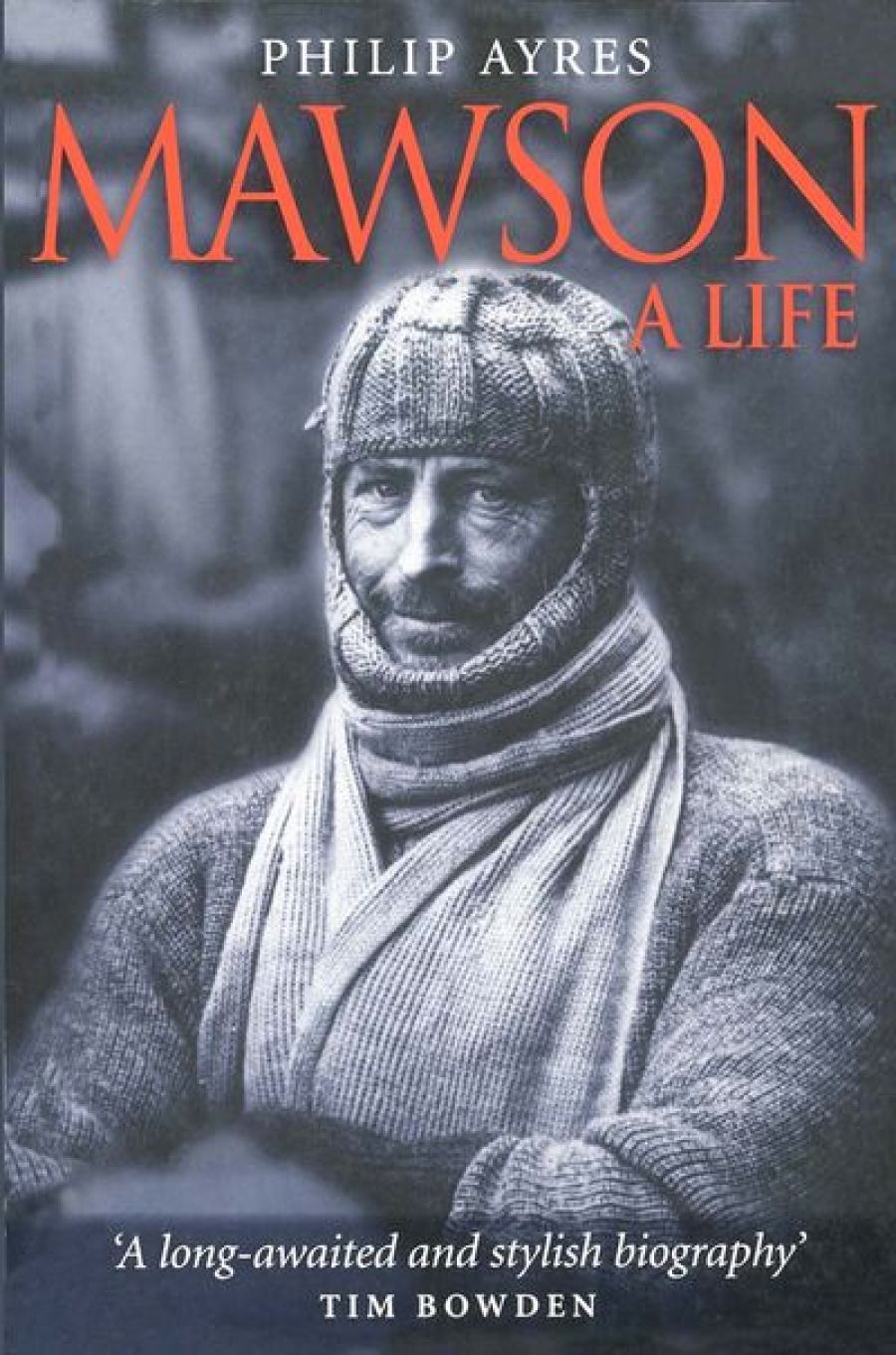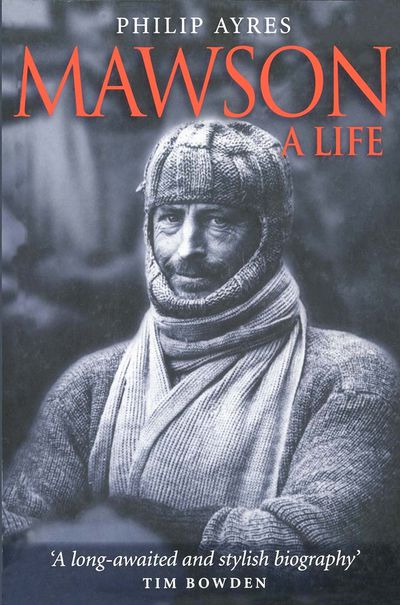
- Free Article: No
- Contents Category: Biography
- Review Article: Yes
- Article Title: The Soul of the Expedition
- Online Only: No
- Custom Highlight Text:
Douglas Mawson died in 1958. Unlike Ernest Shackleton, Mawson was not charismatic, and his descriptions of the Antarctic lack Shackleton’s poetry; unlike Roald Amundsen, he did not reach the South Pole; unlike Robert Scott, he did not perish tragically; but it is no exaggeration to say that the scale and achievements of his Antarctic expeditions dwarf those of his three famous contemporaries.
Mawson was two years old when he arrived in Sydney with his family from England in 1884. As a young man, he studied mining engineering and geology at the University of Sydney. His interest in the glacial geology of South Australia led to his investigation of the highly mineralised Precambrian rocks of the Barrier Range, extending from the northern Flinders Ranges through Broken Hill, work for which Mawson obtained his doctorate from the University of Adelaide in 1909.
- Book 1 Title: Mawson
- Book 1 Subtitle: A Life
- Book 1 Biblio: MUP, $34.95 pb, 322 pp
- Book 1 Cover Small (400 x 600):

- Book 1 Cover (800 x 1200):

His Antarctic involvement began when Shackleton, leader of the British Antarctic Expedition, visited Adelaide on his way south in November 1907. Mawson wanted to see an existing continental ice cap and to become acquainted with glaciation and its geological consequences. Shackleton appointed him as the expedition’s physicist. The trip gave Mawson good opportunities for glaciological and geological investigations: he published significant accounts of his observations on the aurora and geomagnetism. There were more romantic exploits, too: Mawson was a member of the first party to climb Mount Erebus, and, in late 1908, accompanied by A.F. Mackay and Edgeworth David, he struck out for the South Pole itself. It was on this journey that Mawson fell down a crevasse, held only by his worn sledge rope. With death yawning beneath him, Mawson occupied himself by detaching ice crystals from the walls of the crevasse and throwing them up for examination until his companions lowered an alpine rope to haul him to safety.
The three men did not reach the South Pole, but Mawson impressed his colleagues. Shackleton had nominated Mawson as the man to lead a search party should he (Shackleton) not return with his own party, and Edgeworth David said: ‘Mawson was the real leader who was the soul of our expedition to the Magnetic Pole.’ With substantial private and government backing, and a prodigious effort on Mawson’s part in planning, organising, recruiting personnel and acquiring equipment and supplies, an Australasian Antarctic Expedition (AAE) sailed under his leadership in December 1911. The achievements of this expedition, in terms of the territory mapped, the identification and explanation of geological features, the discovery and description of new biological species, the recording and analysis of meteorological data and atmospheric observations, were enormous. It was not until 1947 that the twenty-two volumes of the AAE Scientific Reports, edited by Mawson, were completed.
The AAE became more immediately famous, however, for what happened to its leader on the Far Eastern Expedition, a journey undertaken by Mawson, Lieutenant B.E.S. Ninnis and Dr Xavier Mertz from their base in Commonwealth Bay, Adelie Land, to explore the distant coastline of King George V Land. On 13 December 1912, when the party was approximately 500 kilometres from base, Ninnis, with sledge and dog team, broke through the lid of a large crevasse and disappeared. The sledge he had been pulling had carried most of the food, and the dogs were the party’s best. Mawson and Mertz began their return, progressively using their dogs to supplement their food supply. There has been speculation that the Greenland dog livers, which are very rich in vitamin A, may have poisoned them, but the symptoms the men displayed – skin coming off, hair loss – are consistent with cold exposure (and, indeed, with scurvy). Mertz died on 8 January 1913. Mawson, greatly weakened by inadequate food and nearly a week in a damp sleeping bag caring for his dying companion, had 160 kilometres to go. On 17 January he dropped fourteen feet and was snapped to a halt, turning at the end of a taut, thin rope. Incredibly, after four and a half hours of terrible struggle, he pulled himself out.
He reached base at Commonwealth Bay on 8 February, having maintained his diary and separate meteorological logs throughout the return journey.
The remainder of his story is interesting, if necessarily anti-climactic: honours and awards, new projects, university politics, a less distinguished expedition in 1929-31, and the formal establishment of the Australian Antarctic Territory in 1933. The book is well presented, although there is evidence of careless editing: the word ‘via’ is italicised throughout, and ‘its’, used as a possessive, is apostrophised on page xix. Ayres’s great virtue as a biographer is his scrupulous reliance on primary sources, which he has researched meticulously. He can also be funny. Having just described Mawson’s actions in burying Mertz, Ayres writes: ‘The question some people insist on asking is, “Did he eat him?”’
Ayres doesn’t think he did, and neither do I.


Comments powered by CComment